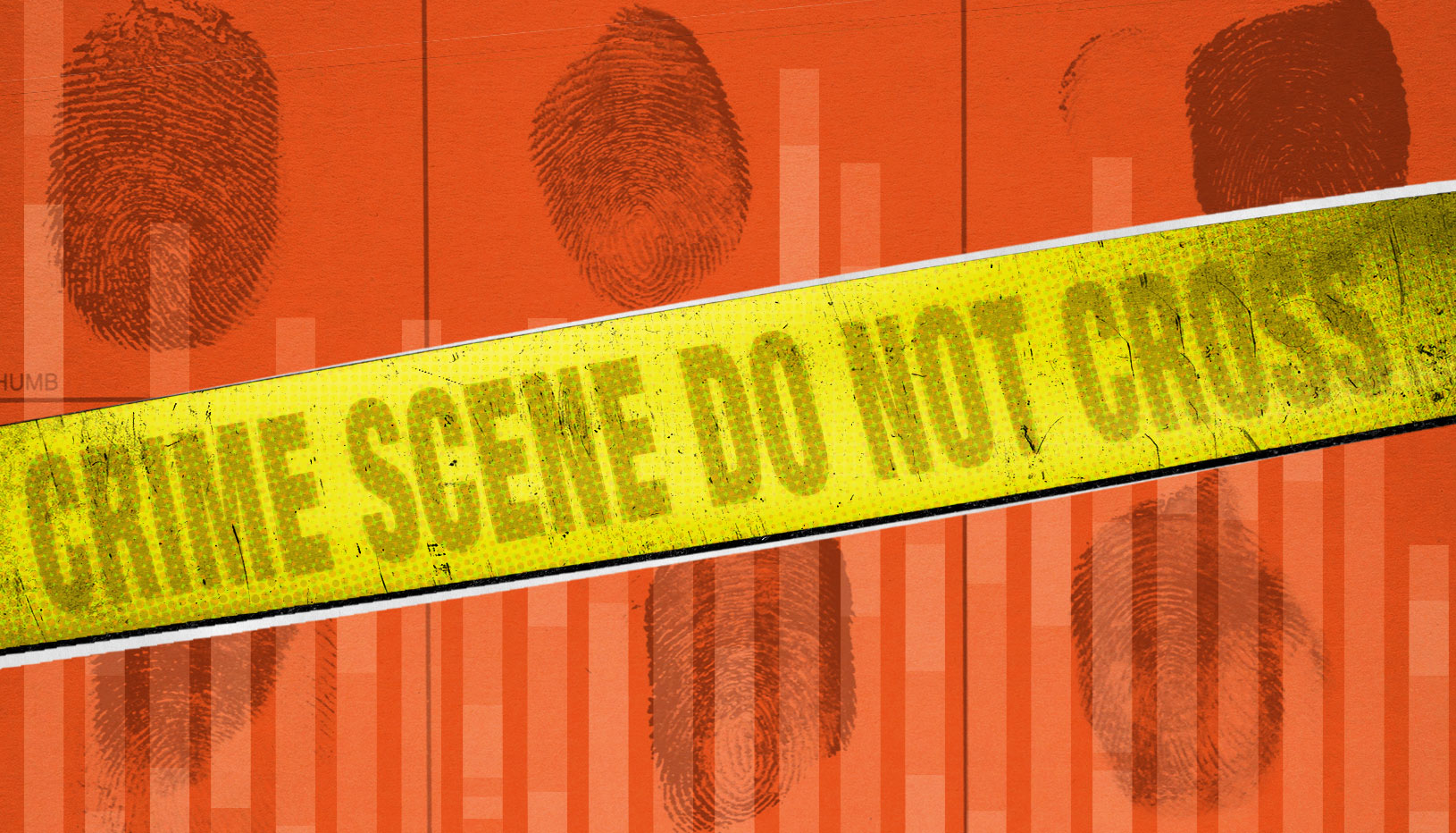What Happened in 2020–2022
Amid a series of interlocking crises, violent crime and some types of property crime rose across the country in 2020 in communities of all types. Data from the FBI and other sources suggests that those trends slowed in 2021. And although national data is not yet available for 2022, the information we do have indicates that murders declined.
Crime in 2020
Crime rates changed dramatically across the United States in 2020. Most significantly, the murder rate — that is, the number of murders per 100,000 people — rose sharply, by nearly 30 percent. Assaults increased as well, with the rate of offenses rising by more than 10 percent. Both increases are connected to a broader surge in gun violence. More than 75 percent of murders in 2020 were committed with a firearm, reaching a new high. Cities that report data on shooting incidents, such as New York, saw significant increases in this form of violence as well.
Murders rose in cities nationwide and in jurisdictions of all types. Relative to 2019, the number of murders jumped by more than 30 percent in the largest cities and by 20 percent in places designated by the FBI as “suburban” — cities with fewer than 50,000 inhabitants that are within a Metropolitan Statistical Area. Murders rose by comparable levels in rural areas too — an important fact that is only now beginning to receive press attention.
Despite politicized claims that this rise was the result of criminal justice reform in liberal-leaning jurisdictions, murders rose roughly equally in cities run by Republicans and cities run by Democrats. So-called red states actually saw some of the highest murder rates of all. This data makes it difficult to pin recent trends on local policy shifts and reveals the central flaw in arguments that seek to politicize a problem as complex as crime. Instead, the evidence points to broad national causes driving rising crime.
We can draw a few additional conclusions about trends in violent crime in 2020. For one, poor and historically disadvantaged communities bore the brunt of the rise in violence in 2020. In just one example, according to the New York City Mayor’s Office of Criminal Justice, the number of shootings doubled in the neighborhood of East New York (from 51 to 102) and nearly tripled in Brownsville (from 34 to 96). Both Brooklyn communities have been hot spots of violence for more than a quarter century. These increases continue a deeper and much more troubling trend that predates 2020 — what sociologist Patrick Sharkey calls “the rigid geography of violence,” in which crime remains relatively concentrated even as absolute levels decline.
Violence also remained concentrated among young people. Around 40 percent of people arrested for murder in 2020 were aged between 20 and 29, matching historical trends. Murder victims were more widely distributed in terms of age, with around 30 percent in their 20s and another 30 percent over the age of 40. Unfortunately, FBI data is too spotty to allow us to draw conclusions about the circumstances leading up to a murder. In nearly half of all cases — a marked increase over recent years, according to the Council on Criminal Justice — the circumstances surrounding a killing were “undetermined.” Finally, violence may also have become concentrated in another way. One study indicates that with violence rising and fewer people outside during the height of the pandemic in 2020, the risk of experiencing a violent crime on the street (measured in crimes per hour spent in public) climbed dramatically, even while the actual number of crimes committed dropped — potentially contributing to a perception of lawlessness not apparent from the raw numbers.
Importantly, though, not all types of crime rose in 2020. In fact, trends in violent and property crime diverged sharply from each other (as illustrated in the table above), with the national rate of property crimes reaching a record low in 2020. While this is uncommon, it is not unprecedented; a similar dynamic unfolded between 2015 and 2016, though on a much less dramatic scale. There are many possible explanations for why property and violent crime trends decoupled in 2020. Lockdown orders, for example, may have significantly reduced opportunities for larceny or made people less likely to report crimes to police (though a government survey focusing on reports of criminal victimization suggests the latter explanation is unlikely).
The increase in motor vehicle thefts is also notable, and not just because it is the only property offense that rose in 2020. For one, motor vehicle theft tends to have a relatively high rate of reporting compared to other property offenses, suggesting that it may be a more accurate barometer of property offenses than, for example, larceny. Additionally, motor vehicle theft has also been linked to more serious crimes, like murder, making its increase a cause for concern.
Crime in 2021: Dealing with Uncertainty in National Data
In early October 2022, the FBI released its long-awaited compilation of 2021 crime data. But this data differed sharply in content and quality from previous years due to a transition in the way the government collects crime data. Specifically, 2021 was the first year to rely exclusively on a recently updated system for tracking crime data, the National Incident-Based Reporting System. Many agencies were not able to transition to the new format in time. As a result, the bureau received full-year reports from agencies covering just half of the country’s population. By comparison, earlier reports included a full year of data from agencies covering roughly 95 percent of the population.
To fill these gaps, the FBI’s report on national crime trends relied heavily on estimates. The agency estimated crime trends for 2021 based on the data it had available. Then it went back to 2020 and applied that same estimating methodology as if that year’s data had been similarly incomplete. In doing so, the bureau aimed to create an appropriate “apples to apples” comparison, despite the differences in data quality. The FBI also used upper- and lower-bound estimates given the uncertainty about the agency’s conclusions, estimates we represent as a rough margin of error.
Ultimately, the FBI’s best estimates suggest that murders rose by roughly 4 percent in 2021, while all violent crime declined very slightly. Independent research partially corroborates those findings. For example, one report, published by the Council on Criminal Justice and focusing on major-city police departments, also showed that murder rates in a select group of cities with available data continued to increase in 2021, although at a much slower rate than in the previous year. But the same report suggests violent crime also rose slightly, contrary to the FBI’s findings.
Unfortunately, this uncertainty is likely to persist. Reliable government data on crime trends in 2021 may never be available for some states and even many large cities. Data quality will likely improve for 2022, but it’s too soon to know for sure.
Crime in 2022: Early Indicators
FBI data covering all of 2022 is not yet available, so it is too soon to speak with confidence about national crime trends for that year. But research by Jeff Asher, an analyst who studies crime trends, and another report by the Council on Criminal Justice, point to two positive developments: murders and gun violence appear to have dropped in many cities. Even though the analyses are derived from data covering a limited number of cities, any decline in gun violence is welcome news after two years of increases.
However, the Council on Criminal Justice report notes that in many cities, robberies increased in 2022, alongside a dramatic rise in motor vehicle thefts. A similar trend unfolded in New York City, where a roughly 10 percent decline in murder accompanied a rise in other offenses, including robberies and burglaries.
Researchers should closely track this apparent divergence. One possible explanation is that the rise in crimes like robbery — which are more likely than murders to be committed by a stranger — may have coincided with a return to pre-pandemic conditions as more people left their homes more often. The data does indeed show an uptick in foot traffic and commerce relative to 2021. Daily ridership on New York City’s subways, for example, did not consistently exceed 60 percent of pre-pandemic trends until spring 2022. But it remains to be seen whether this is mere correlation or a reflection of something deeper.
Placing Current Trends into Historical Context
These increases in crime rates are serious on their own terms and should not be trivialized. Nationally, however, they do not return us to the high crime rates of the early 1990s. From 1991 to 2014, the national murder rate plummeted by more than 50 percent, from 9.8 to 4.4 killings per 100,000 people. By comparison, the murder rate for 2020 stood at around 6.5 — a rate last seen in the late 1990s but still well below the high point of the last quarter century. The rate of violent crimes per 100,000 people in 2020 has been relatively flat, comparable to the rate last seen a decade prior in 2010.
This historical context and the steep increase in murders relative to other violent crimes are both important for understanding the problems posed by recent trends in violence, as well as for evaluating potential solutions. But even with violence well below historic highs, members of the public are right to be concerned, and it is incumbent upon policymakers to develop smart, innovative answers to these new public safety challenges.



